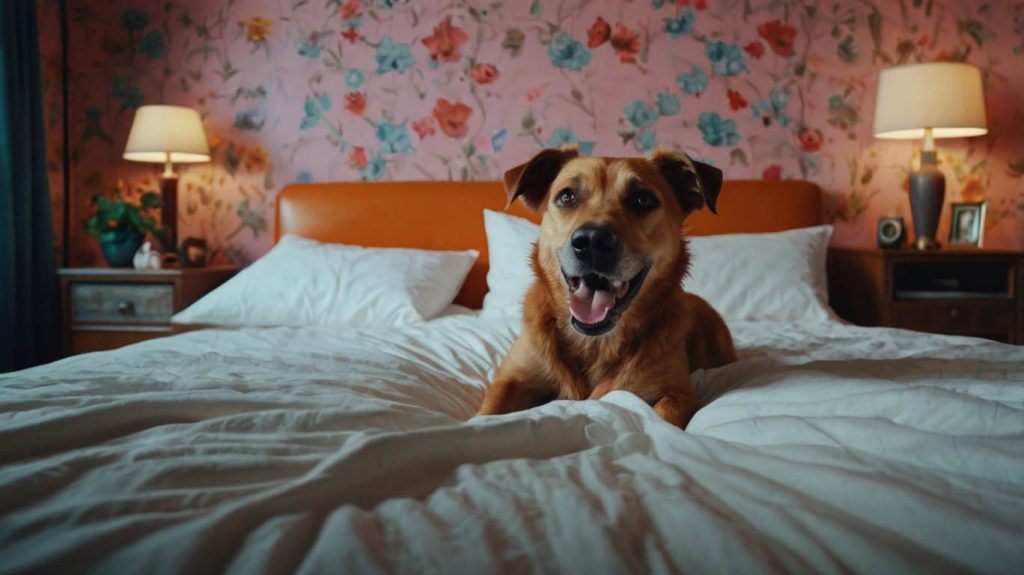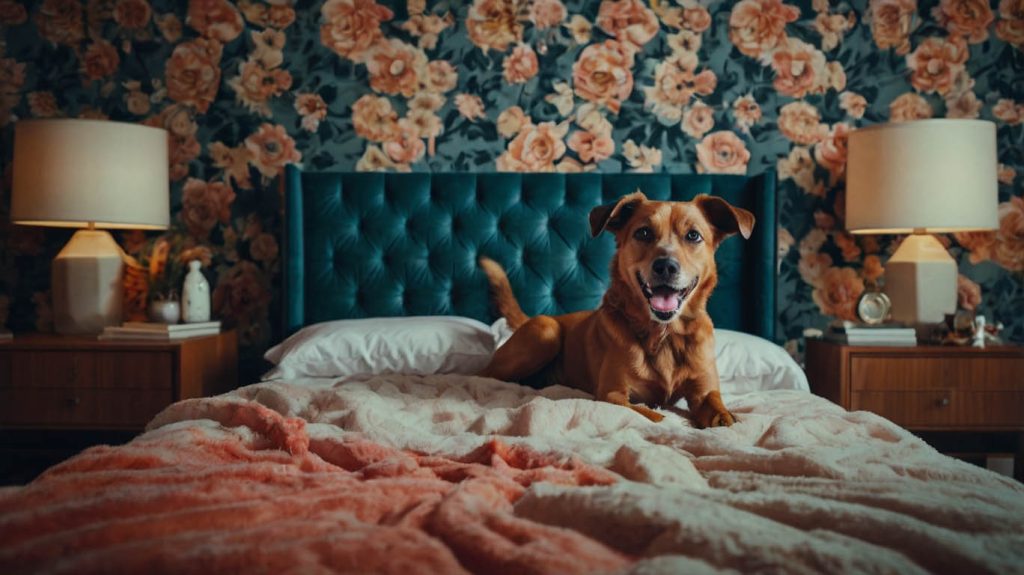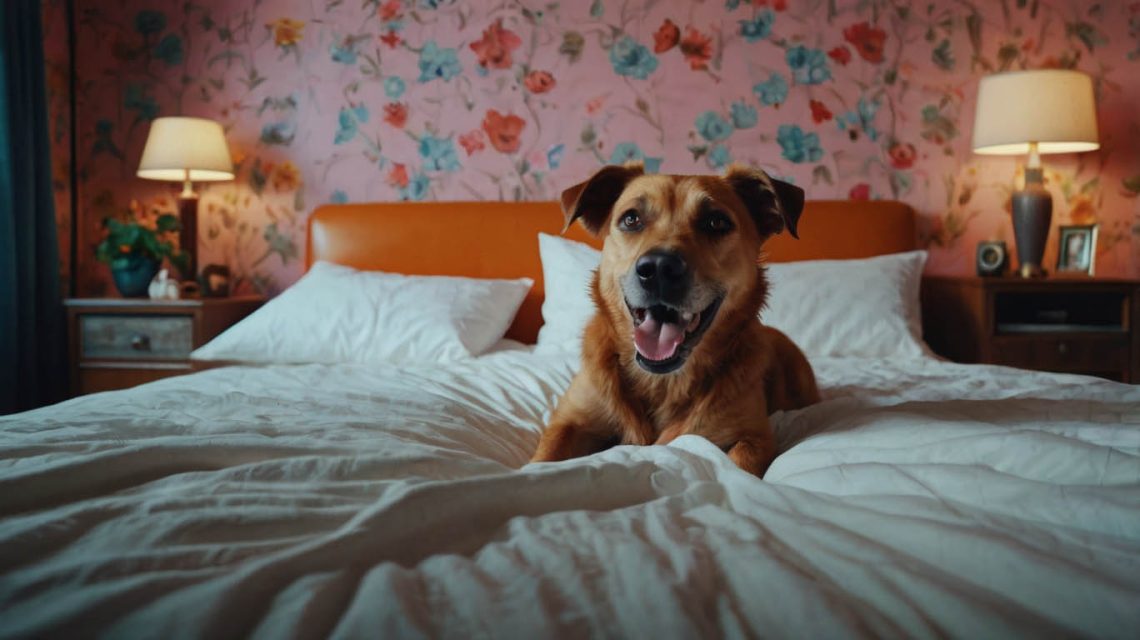It happens in a flash—you turn around, and your dog has shredded its bed into fluff confetti. While it might seem funny at first, repeat offenses can get expensive and concerning. Understanding how to stop dog from destroying bed goes beyond just buying tougher materials. It’s about addressing the why behind the behavior and using smart training methods to fix it for good.
In this guide, you’ll explore expert-backed strategies, a relatable dog owner’s journey, and step-by-step methods to protect the bed—and your sanity.
Why Dogs Destroy Their Beds in the First Place
Before you can stop the behavior, you have to understand it. Dogs chew or dig at their beds for several reasons:
- Boredom: A bored dog will find creative outlets for energy—like destroying its bed.
- Anxiety or stress: Separation anxiety and fear can lead to destructive habits.
- Instincts: Dogs have nesting instincts; some breeds are more prone to digging.
- Teething: Puppies in particular chew to relieve discomfort.
- Lack of training: If they’ve never been taught not to chew the bed, they simply don’t know better.
Clearly, if you want to learn how to stop dog from destroying bed, identifying the root cause is key.

Storytime: How Bailey Learned to Respect Her Bed
Meet Bailey, a two-year-old Boxer with a big heart and an even bigger chewing habit. Her owner, Melissa, tried everything—new beds, bitter sprays, yelling (which didn’t help). Yet, each morning, she’d walk into a scene of destruction.
One day, Melissa changed her strategy. Instead of reacting after the fact, she began addressing Bailey’s boredom. Puzzle toys, a daily walk schedule, and consistent crate training turned things around. Within weeks, Bailey stopped chewing her bed altogether.
This transformation shows that how to stop dog from destroying bed often starts with proactive attention and redirection—not punishment.
Start with the Right Type of Dog Bed
Not all beds are created equal. If your dog is prone to destruction, start by investing in:
- Chew-resistant or indestructible beds
- Elevated beds with metal frames
- Beds with no zippers or loose stuffing
Brands like K9 Ballistics or Kuranda Beds are known for durability. However, even the best bed can be destroyed without training, so gear is only one part of the solution.
How to Stop Dog from Destroying Bed: A Training Approach
To truly fix the issue, consistent training is necessary. Here’s a breakdown:
Redirect With Toys and Chews
As soon as your dog starts chewing the bed, redirect their attention with a chew toy. Offer it while calmly saying “no bed,” then praise when they choose the toy.
Use Crate Training Wisely
Crates can be a safe haven—not punishment. Crate your dog with a chew-proof mat and a toy. Make the crate a positive space with treats, not isolation.
Establish a Routine
Dogs crave structure. A predictable schedule for walks, play, meals, and rest reduces anxiety, which often drives bed destruction.
Teach “Leave It” Command
The “leave it” command can work wonders. Start with treats and slowly apply it to their bed. Reward every successful compliance.
How to Stop Dog from Destroying Bed When You’re Not Home
Supervision isn’t always possible. So, here’s how to manage the issue during your absence:
- Remove the bed when you leave, especially during early training stages.
- Use a camera to monitor behavior and catch patterns.
- Provide stimulation with long-lasting chews or puzzle feeders.
- Crate your dog if needed, but only after proper crate training.
The secret to how to stop dog from destroying bed often lies in managing the environment—not just correcting the action.
Common Mistakes That Make the Behavior Worse
To avoid setbacks, don’t:
- Yell after the fact: Dogs don’t associate punishment with past actions.
- Buy soft beds too soon: Start with durable options first.
- Punish destruction without redirection: You must show what’s acceptable instead.
- Ignore early signs: Small tears today become big problems tomorrow.
By learning what not to do, you’re halfway toward figuring out how to stop dog from destroying bed effectively.

How Exercise Prevents Bed Chewing
A tired dog is a calm dog. If your pup has destructive habits, ask yourself:
- Are they getting at least 30–60 minutes of daily activity?
- Do they have mental challenges, like scent games or obedience work?
- Are you engaging with them beyond walks?
Increasing enrichment often reduces unwanted chewing drastically.
Puppies and Chewing: A Special Note
Teething puppies need extra attention. To prevent destruction:
- Offer frozen carrots or puppy-safe teething toys.
- Supervise closely during rest time.
- Avoid fluffy beds until after the teething stage.
Understanding how to stop dog from destroying bed as a puppy will set the tone for adulthood.
Case Study: Shelter Dog Finds Peace with a Bed
Rico, a rescued pit bull, destroyed five beds in two weeks at his new home. His owners consulted a trainer who suggested more exercise and command training. They also introduced a Kong stuffed with peanut butter before bedtime.
With time, Rico stopped chewing and now sleeps peacefully. The key? Understanding behavior, not reacting with frustration.
This case shows that how to stop dog from destroying bed often involves small lifestyle changes and big results.
FAQs
Why does my dog destroy its bed only at night?
Nighttime anxiety or pent-up energy is often the cause. Try increasing exercise and using calming toys.
Should I stop giving my dog a bed altogether?
Temporarily, yes. If destruction is ongoing, switch to mats or crates and reintroduce beds later.
What chew toys can help redirect this behavior?
Durable toys like Nylabones, Benebones, or frozen Kongs work well.
How long does it take to stop this habit?
With consistent training, most dogs improve within 2–4 weeks.
Is this behavior normal?
Yes—especially in young, energetic, or anxious dogs. It’s fixable with proper techniques.
Will punishing my dog stop the destruction?
No. Punishment often increases anxiety. Use positive reinforcement instead.
Conclusion: Stop the Destruction, Strengthen the Bond
Learning how to stop dog from destroying bed is less about discipline and more about understanding. Dogs aren’t being bad—they’re communicating needs. When you address boredom, anxiety, and lack of structure, destructive behaviors fade away.
Invest in the right gear, teach essential commands, and most importantly—engage with your dog. A well-exercised, mentally stimulated pup won’t feel the urge to shred their comfort zone.


